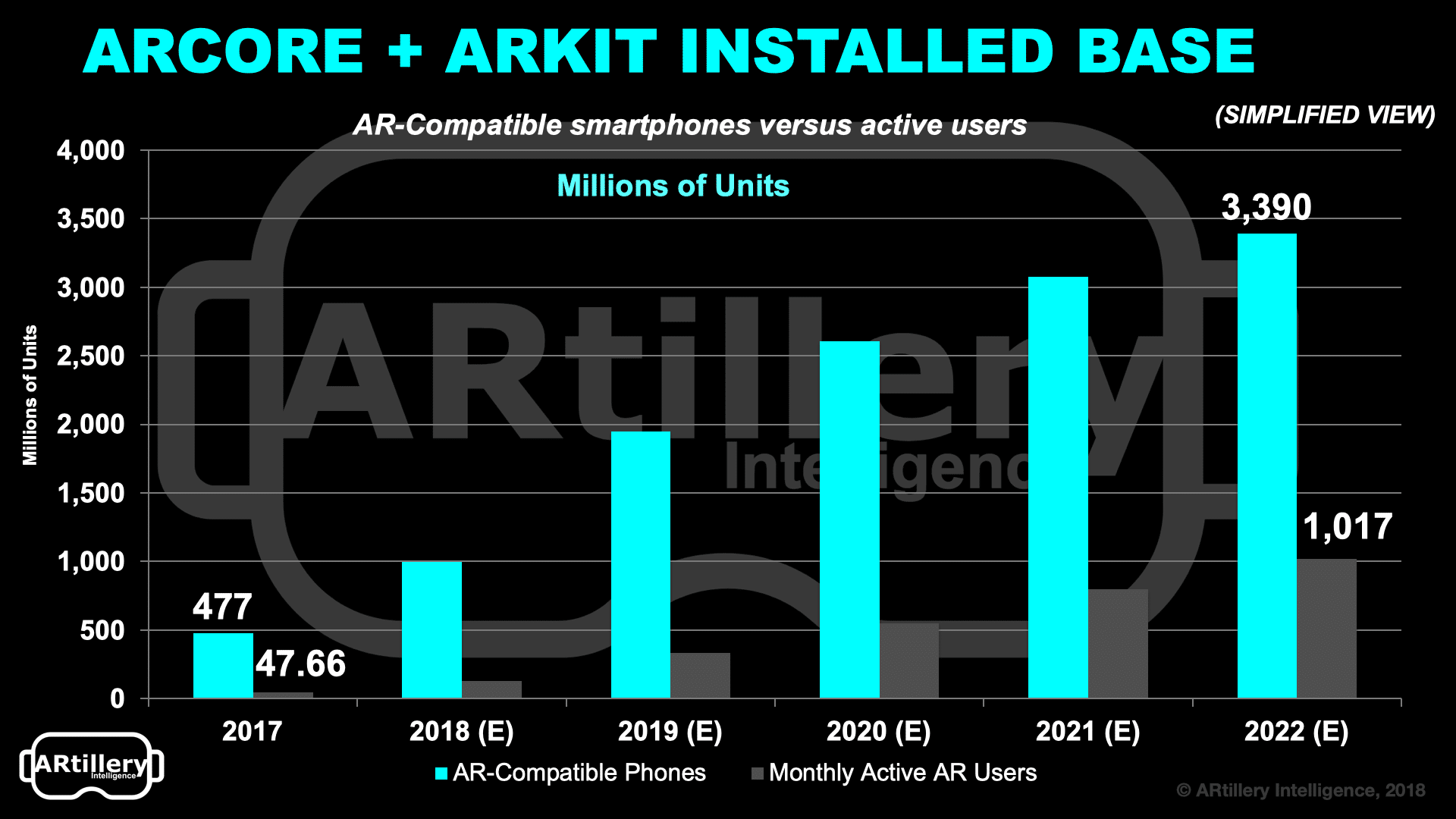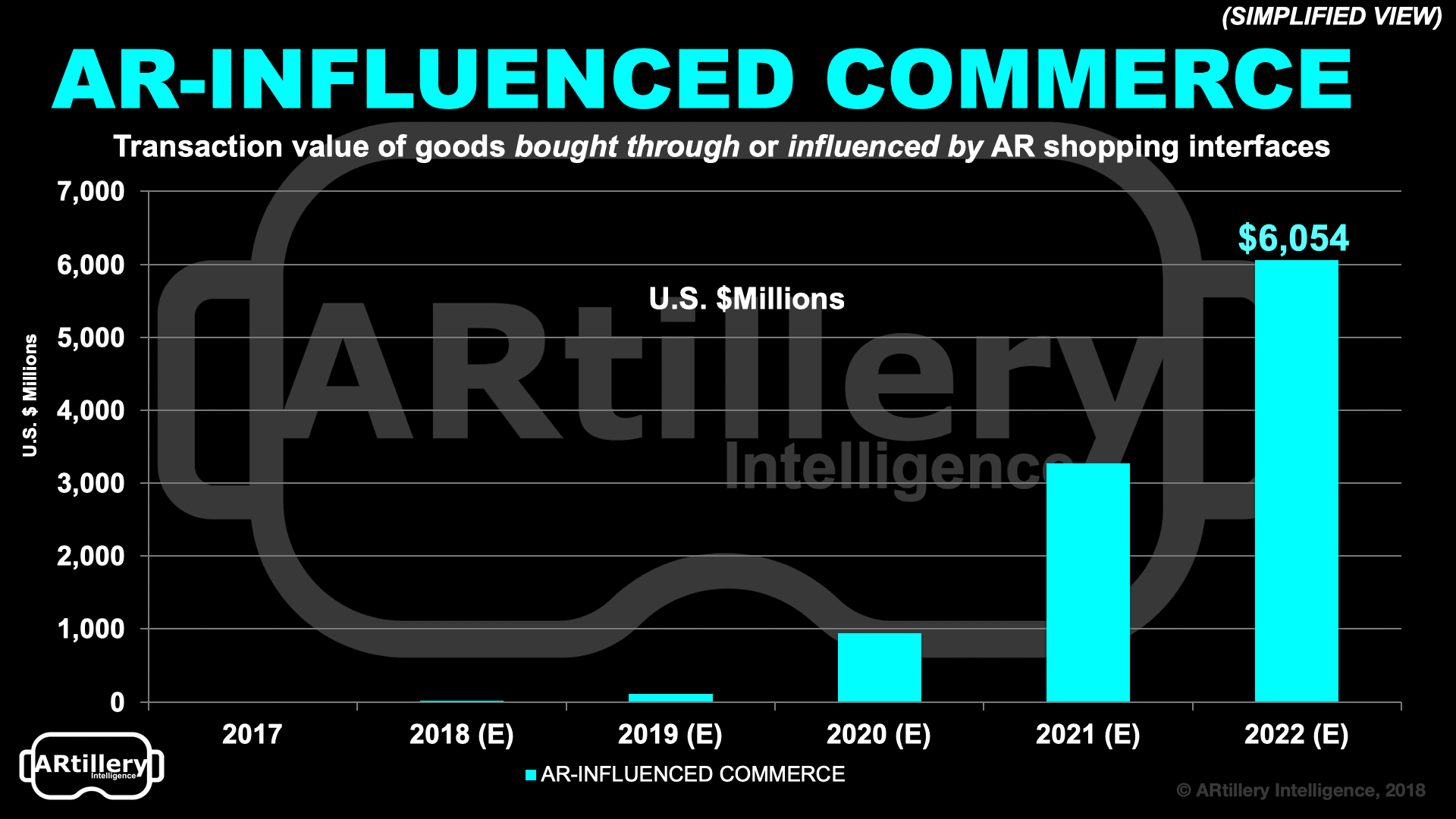
Data Point of the Week is AR Insider’s dive into the latest spatial computing figures. It includes data points, along with narrative insights and takeaways. For an indexed collection of data and reports, subscribe to ARtillery Pro.
Among AR use cases, consumer shopping is showing early traction. AR’s ability to demonstrate products in immersive ways brings both consumer utility, and brand marketing efficacy. The alignment in interests of those stakeholders is also a big confidence signal for AR commerce.
Adding to these early signals, Gartner recently announced that it projects 100 million AR shoppers by 2020. That includes both product visualization in consumers’ homes, such as Ikea Place, as well as in-store AR shopping experiences, such as Walmart’s visual search.
This figure aligns with data from our research arm, ARtillery Intelligence. Specifically, total AR users are projected to reach about 500 million by 2020. That would make AR commerce users a subset of that — roughly 20 percent if both firms’ figures are accurate.

Cross-referencing that with ARtillery’s consumer AR survey with Thrive Analytics, the figures roughly align. 25 percent of respondents reported using AR for product visualization. That’s a bit higher than the 20 percent calculated above, but within a comfortable range.
ARtillery Intelligence also projects just under $1 billion in consumer purchases through AR shopping experiences by 2020. That, combined with Gartner’s figure, suggests $10 per user in average annual transaction volume. There will likely be fewer users with greater spending per user.
Panning back, Both research firms are bullish on AR commerce because of the alignment in stakeholder interests, as mentioned above. But it’s also due to other factors such as potential frequency of use, and the fact that AR shopping addresses real consumer pain points.

That includes saving customers time and money. Product visualization instills confidence in online orders, thus informed purchases that reduce cumbersome returns (Amazon loves that part). In-aisle AR can also empower consumers in terms of price transparency.
The latter already exists as part of the “showrooming” phenomenon. But AR and visual search will bring a better and more intuitive version of showrooming (no typing). And along with 5G, which has indoor benefits, AR could finally realize the unfulfilled promise of retail beacons.
So the pieces fit in terms of logical integrations and aligned interests for all stakeholders — retailers, brands, shoppers, etc. So it’s more a question of when. It could admittedly take a while due to natural inertia and resistance to new technology. But we’re well on the way.
For deeper XR data and intelligence, join ARtillery PRO and subscribe to the free AR Insider Weekly newsletter.
Disclosure: AR Insider has no financial stake in the companies mentioned in this post, nor received payment for its production. Disclosure and ethics policy can be seen here.
Header Image credit: Lowes
